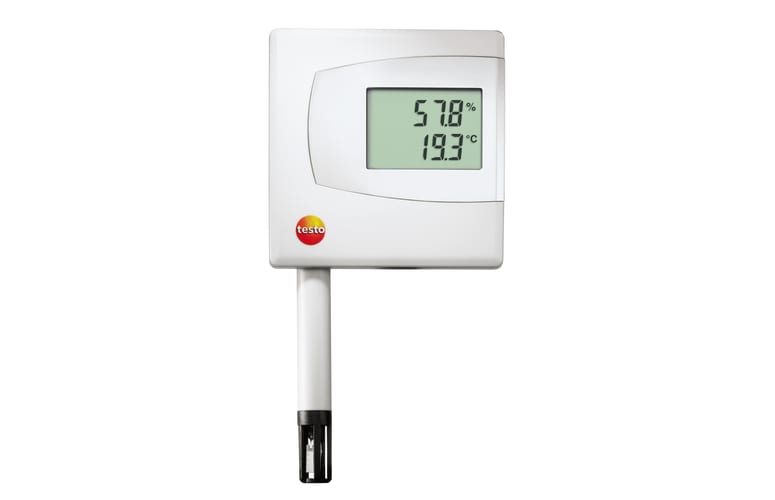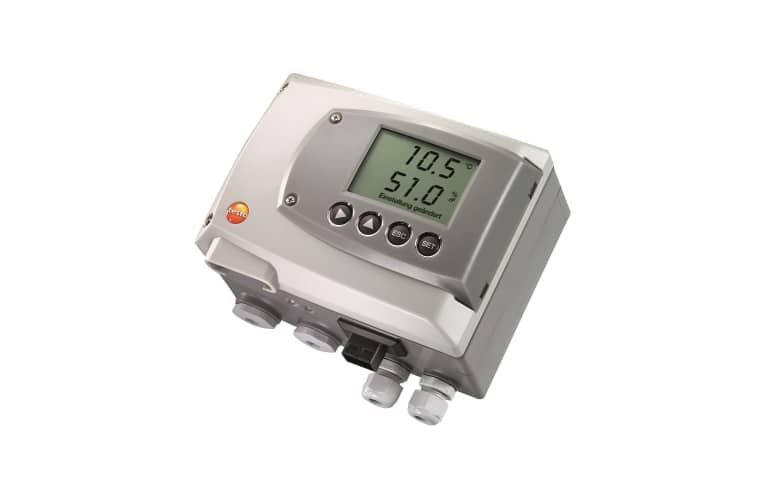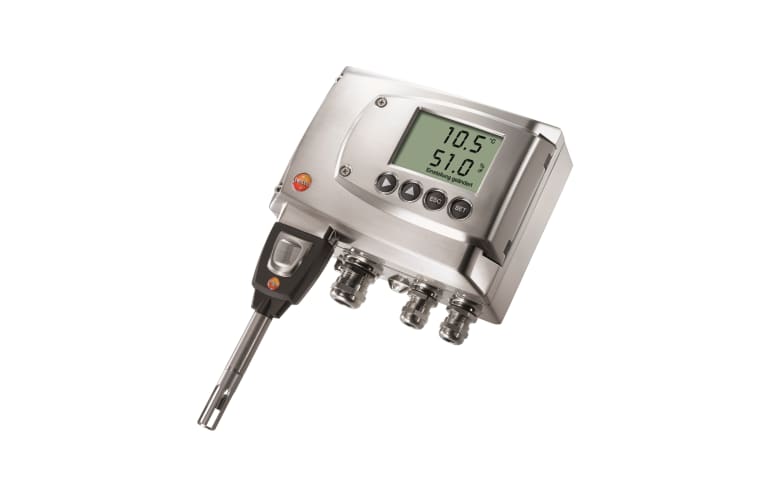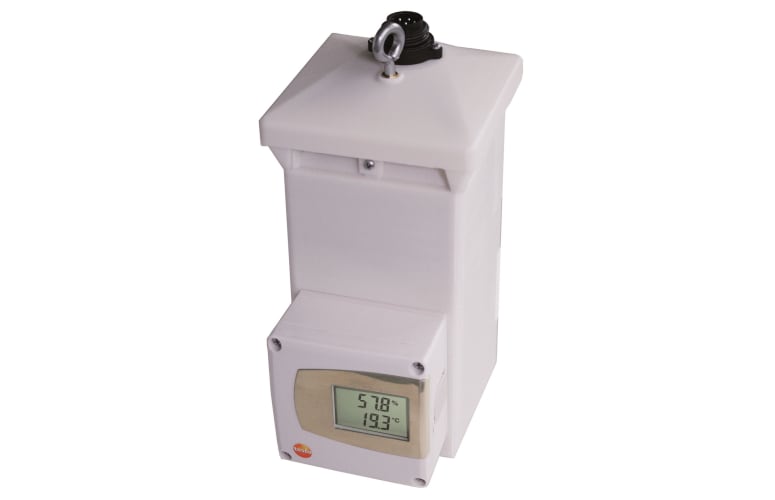The Testo humidity sensor has been in use for more than 20 years now and continuously improved, and from the very beginning, the focus has been on the two accuracy parameters - measurement uncertainty and long-term stability: A moisture-sensitive polymer serves as the dielectric between two capacitor electrodes.
The special feature, though, lies in the perfect way the individual layers are designed. This is evident particularly in the top electrode, which has to perform two tasks that, at first glance, appear contradictory: it must be completely permeable to the water vapour that is to be led to the polymer dielectric, but at the same time it must be impervious, smooth and repellent to condensate, oil and dirt in order to protect the sensor.
These roles have, after some considerable research, been optimally combined in the Testo humidity sensor. This structure, and the high stability in Testo’s production and calibration, make it possible to guarantee a measurement uncertainty of +/- 2 %RH for Testo humidity transmitters, or optionally even +/-1 %RH.
In addition, the humidity sensor has great long-term stability. This was demonstrated in an inter-laboratory test, in which several humidity sensors from Testo were tested by a number of international calibration laboratories (PTB, NIST, etc.), whereby the +/- 1 %RH limit was not exceeded even without recalibration.
The more accurate the humidity measurement, the lower the operating costs of the air conditioning system. In accordance with international standards (ASHRAE Fundamentals, DIN 1946, etc.), air conditioning systems are required to deliver air humidity levels of between 30 and 65 %RH. Higher humidity levels must be brought into the target range via dehumidification, and lower humidity levels via humidification.
If a humidity transmitter with a total measurement error of +/- 2 %RH (measurement uncertainty including long-term drift) is used for humidity measurement, the operating costs are noticeably lower than if a typical climate transmitter with a total measurement error of +/- 6 %RH (uncertainty including long-term drift) is used.
This comparison stands out even more starkly in favour of the high-quality humidity transmitter if the %RH target range to be achieved is more narrowly defined, e.g. for cleanroom applications.









